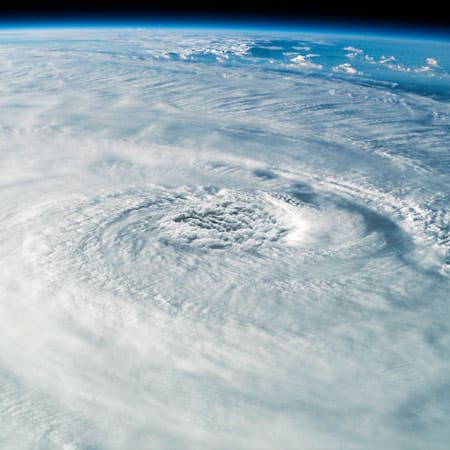rethink sustainability
Liquid Assets: Investors and the urgent challenge of water sustainability

When we turn on a tap, water comes out. Today, that fact seems entirely unremarkable. But just take a moment to consider what it represents. Given absolutely optimal conditions, the longest a person can survive without water is a week. Access to water has defined the organisation of societies and the daily lives of individuals for as long as our species has existed. Then, for most of us, the innovation of water on tap changed everything. And it did so relatively recently in human history.
World Water Day, celebrated annually on 22 March, celebrates this remarkable achievement. But as we enter the third decade of this century, it also serves as a reminder that, if we are to keep hold of our liquid assets, we must act now.
Uncharted waters
Climate change is set to make both chronic water shortages (growing long-term discrepancies between supply and demand) and acute water shortages (episodic droughts) significantly more common. And our growing population will compound the issue. By 2050, global water demand is predicted to increase by 20-30%, and around 57% of the global population will live somewhere that experiences water scarcity for at least one month per year.
We’re already seeing the effects. For instance, in 2017-18, a severe drought, combined with a failure to sufficiently account for the city’s growing population, caused an acute water shortage in Cape Town. Meanwhile, the threat of desertification to Southern European countries such as Portugal, Italy, Greece, Cyprus, Bulgaria, Romania and, in particular, Spain, is receiving growing recognition.
Aside from their direct effects on the everyday lives of millions, water shortages also have indirect societal effects. For instance, in 2017, the UN cited water as a major factor in conflict in 45 countries, with disputes between downstream and upstream areas likely to intensify in the coming years.
Economies and businesses also feel the effects of water shortages. For example, the World Bank found that the negative impacts of water scarcity in areas such as agriculture, health and income could cause countries in the Middle East, north and central Africa and East Asia to lose up to 6% of their GDP by 2050. In 2018 alone, water-related losses at companies involved in a study on the subject totalled $36bn.
The United Nations has already baked tackling water scarcity into its sixth Sustainable Development Goal: Clean Water and Sanitation. And governments will surely play an important role in the coming years. Already, the state of California has introduced targets to reduce individual indoor water consumption to 50 gallons per person per day by 2030. Meanwhile, in 2019, the UK Government held a consultation on reducing personal water consumption, with a view to setting its own targets.
Alongside the vital difference that will be made by governments and policymakers, what else can we do to solve water scarcity? Enter the investor.
Liquid assets
Like any problem, the question of reducing water scarcity is one of creating and harnessing new knowledge. Specifically, the knowledge of how to both reclaim more water and use less water through new technologies made available to the right people in the right numbers. And creating and deploying such knowledge requires investment.
Malta—a country with no permanent rivers or lakes—provides a classic example of adverse circumstances fostering innovation. In 2018, the archipelago's Water Services Corporation, which is responsible for Malta’s drinking and waste water cycle, launched its “Towards a Net Zero-Impact Utility” project. The holistic endeavour aims to revolutionise water production and distribution in the country, and includes a new reverse osmosis plant and upgrades to its desalination plants for capacity and energy efficiency. The project has been described as a “blueprint for water sustainability” by the European Union, and won the prize for Water Governance at the 2019 Water Innovation Awards.
At the startup end of the scale, LifeStraw makes a range of products that can make even the most filthy water clean enough to drink. At the heart of LifeStraw’s products are its “ultrafilters”. With a far smaller pore size than the more common microfilter, ultrafilters are capable of removing almost 100% of viruses, bacteria, parasites and microplastics.
German company aqualonis has even made it possible for remote communities prone to water scarcity to pull their supply of water out of the air. The CloudFisher™ is a fine-mesh net on which tiny fog droplets condense and merge until they’re heavy enough to drop into a reservoir, creating an ongoing supply of potable water. The technology has been deployed in several projects; the largest of which supplies water to 17 villages in Morocco. The likes of Jeff Bezos and Bill Gates have invested in a more high-tech version of this technology that could be deployed in areas not prone to fog: a new kind of solar panel that can harvest up to five litres of water vapour from the air per day.
Even desalination, which is currently too expensive and energy-intensive to be seen as anything but a last resort, may be an area ripe for innovation. A 2019 piece by the Guardian highlighted several projects working in the area, such as a prototype that uses solar collectors to boil water and condense it separately from the salt and dirt it once contained.
New technologies that reduce water consumption could have an even more significant impact on water scarcity. For instance, startup Orbital Systems has used technology originally developed by NASA to create a new kind of shower. Instead of every drop disappearing down the drain, the Oas Shower recirculates and filters a fixed amount of water—up to 90% less than a traditional shower.
Agriculture is perhaps the most critical sector in which to invest in consumption-reducing technologies. Around 70% of freshwater withdrawals globally are used for agriculture, which is expected to increase by about 20% by 2050 without efficiency improvements. A promising route is that of developing new precision farming techniques. Here, sensors, data and AI are used to help farmers maximise their yields using the least amount of resources, including pesticides, fertilisers and, crucially, water. New water-saving irrigation technologies would also have a significant impact on water consumption in agriculture; in particular when applied to rice, which requires more water than any other crop. A recent study found that 94% of Chinese rice paddies are suitable for water-saving irrigation, which could yield a water saving rate of up to 26%.
Another exciting emerging technology is that of cultured meat, in which real meat is grown without the animal by cultivating the requisite cells in a natural medium. Apart from being far cleaner and less land- and energy-intensive than raising animals for food, one study estimated that, depending on the meat product, cultured meat will require 82-96% less water than the equivalent animal product.
Besides investing in businesses focused on increasing water reclamation and reducing consumption, we at Lombard Odier are able to measure the water footprint of existing investments. Should a client wish to reduce the water footprint of their portfolio, we can explore more sustainable investment solutions.
Investors power solutions to problems. And, given that the basis of much of the water scarcity we face in the coming years—and, arguably, one of the most significant challenges we face today—is climate change, the need to invest in curbing rises in global temperatures through innovation is growing in urgency. That said, at least to some degree, growing water scarcity looks to be inevitable. It would, therefore, be a mistake to focus solely on its primary cause. The time to begin looking for new solutions is now. And our scientists, engineers and entrepreneurs are thirsty for investment.
Important information
This document is issued by Bank Lombard Odier & Co Ltd or an entity of the Group (hereinafter “Lombard Odier”). It is not intended for distribution, publication, or use in any jurisdiction where such distribution, publication, or use would be unlawful, nor is it aimed at any person or entity to whom it would be unlawful to address such a document. This document was not prepared by the Financial Research Department of Lombard Odier.
Read more.






share.